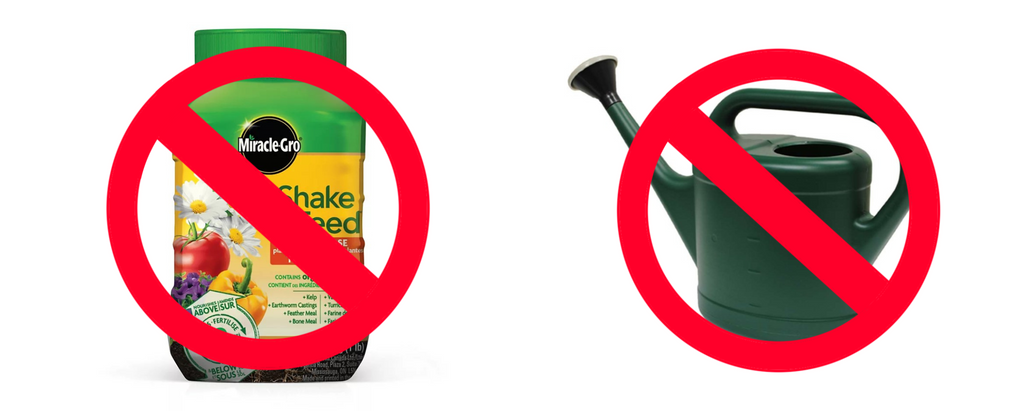Make Christmas Turkey Poultry Seasoning with Homegrown Herbs

My favorite part of the Christmas season is the festive meal with family and friends on Christmas day. Especially the turkey! I am betting that all the gardeners out there have some dried homegrown poultry seasoning herbs in their pantry. Those herbs are Sage, Rosemary, Thyme and Marjoram.
Poultry seasoning was created by William Bell of Boston in 1867. He used it to season pork and sausage but soon it was being sprinkled on turkey, chicken and duck. At the end of this blog I will give you a super easy delicious savory recipe for homemade poultry seasoning. It originated on the website 'Taste of Home' by Jenna Urben. If you have dried herbs hanging in your pantry, grind down the ingredients, mix, and season that turkey!
The dominant flavor in poultry seasoning is the herb Sage. Common Sage ( Salvia officinalis) is rich in vitamins K, B6, calcium and iron.

Sage was used in Egypt to enhance fertility and the Greeks/Romans used it as a meat preservative, to aide digestion, enhance the memory, and to make a poultice to stop bleeding. They even used sage to clean their teeth!
For hundreds of years Native American people have used the sacred White Sage (Salvia apiana) for ceremonies and rituals (smudging) to get rid of negative energy and to refresh, purify and protect.
Other sage varieties include Golden, Purple, Tricolor, Pineapple, Greek, and Spanish. I often use the variegated varieties in outdoor mixed planters. You can also keep sage as a houseplant! Try common sage as a tea to relieve sore throat pain.
Common Sage is easily grown from seed indoors under lights or outside in spring and summer. Plant at a depth of ¼ inch. It usually takes 7-14 days to germinate and 75 days to maturity. Mature leaves are grey-green and fuzzy. You can use the leaves of young plants but the most flavorful leaves are the largest mature ones. At maturity your sage plants will each need a large pot as this plant will reach 30-60 cm in height and width. Other sage varieties vary in mature height and width.
Seed started indoors should be placed in a sunny location after germination for 6-8 weeks before planting out. If you will be using the sage for seasoning, do not fertilize. Fertilization will cause the leaves to lose flavor.
Another golden rule when growing sage is to not overwater. This plant is drought tolerant once established. Overwatering will cause root rot so good drainage is very important.

Sage flowers are produced in early summer, and have a camphor/mint-like aroma. Depending on the variety, the scent can vary and the flower color can be blue, purple, pink or white. The flowers are produced in spikes and are especially loved by bees and butterflies. The flowers are also edible!
Propagation can be done by gathering stem tip cuttings and placing them in moist vermiculite. They take about six weeks to root.
Dry sage by hanging loosely bundled bunches of cut stems upside down to air dry. Drying time is usually about 10 days but may take longer. When the sage leaves are completely dry, strip the leaves from the branches, crumble them into an airtight container and store in your pantry until you are ready to grind them down with a mortar and pestle. This is the old school way of drying and grinding herbs but many people now dry them by microwave or food dehydrators.
FYI – Sage plants grown outdoors need about 6-8 hours of sun per day. The more sun you give the plants, the more flavorful the leaves will be!
Sage is considered hardy in Zone 4 and up. If you have a sheltered sunny spot in your garden, as an experiment, leave one plant in the soil, remove any branches once frosted and mulch. During the winter pile snow on this mulch for extra insulation. Come spring, you may be pleasantly surprised!
Poultry Seasoning Recipe
- 3 Tbsp. dried ground sage
- 2 Tbsp. dried ground thyme
- 2 Tbsp. dried ground rosemary
- 1 Tbsp. dried ground marjoram
- ½ tsp. ground nutmeg
- ½ tsp. ground pepper
Thoroughly mix all ingredients together and store in a cool, dark place in an airtight container. Remember that dried herbs are 2-3 times stronger than fresh herbs.
With thanks to Jenna Urban and her website 'Taste of Home'.
A dried leaf bundle of poultry seasoning ingredients tied with a red ribbon and a decorative card with the recipe makes a great hostess gift.
